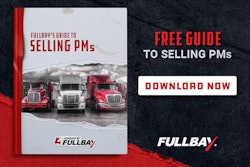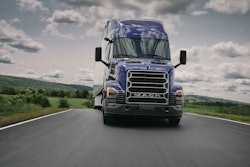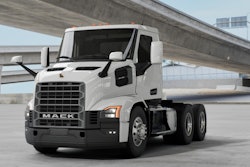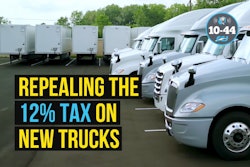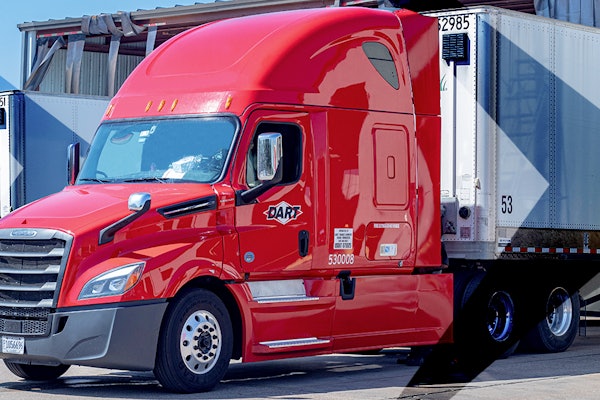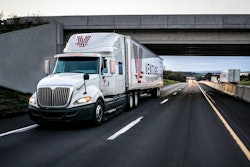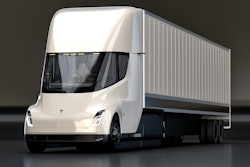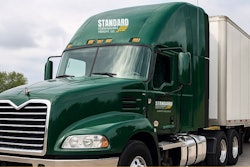Whatever happened to truck wing windows?
I was a participant in a 1990s new truck development program deciding the fate of the iconic truck wing window. The battle over wing windows is symbolic of the fight over an entire range of truck options which are now labeled as the “traditional” truck.
Labeling a truck as traditional implies, to some, the phrases old, archaic, irrelevant, etc. Traditional is a polite way of saying outdated.
Sometimes being outdated can become desirable again. Think of all the times the original vibe was recaptured and then labeled retro. Retro is where something new shares design elements with an older product. It’s not necessarily exactly the same, but rather is made in the spirit of that older product. I’ve worked with some amazing industrial engineers over the years, but can only scratch the surface of the vocabulary they use in describing design themes, so my apologies for simplifying the description.
In the 1990s, the iconic freight truck was long and tall, and dipped in chrome, polished aluminum and stainless steel. Aerodynamicists would describe them as bluff bodies indicating they had the aerodynamics of bricks on wheels, slightly better than the cabovers they replaced.
OEM marketing experts at the time described the vehicles as proud, masculine, mature, premium, etc. Industrial engineers responsible for developing the next new thing would call these trucks dated. Many of the styling lines had not changed much in decades. Much of the styling was dictated by the simplicity of flat panel manufacturing. There were many rivets, they were exposed and proud, emphasizing visually an ease of repair and structural strength.
Those 1990s trucks models included a venerable list of classics, such as the Peterbilt 379, Freightliner FLD Classic XL, the Kenworth W900L, Western Star 4900, Marmon 57P, etc.
The 1990s iconic truck was defined by dual cab vertical exhaust stacks, dual external air cleaners, large capacity dual shiny fuel tanks, polished aluminum wheels, large west coast style door-mounted mirrors, well defined exterior sun visors, tripod fender mounted spot mirrors, often with police car style swiveling spot lamps mounted in the driver’s A-pillar, shiny grab handles everywhere, shiny air horns, shiny proud marker lights, large Texas-style chrome bumpers, long flat-roofed sleepers, and long wheel bases.
Under the massive hood of these classics, prowled a monster high horsepower engine often rated at 600 HP, often made by Caterpillar, driving an 18-speed manual transmission. Power seemed to be defined by noise levels, and the higher the better.
The cab interiors often carried over the chrome, polished aluminum and stainless-steel looks including gauge bezels, toggle switches and more. Driving an 80,000 lbs. truck requires expertise. A truck driver was just like an airplane pilot, so truck dashboards were crammed with endless round analog gauges, toggle switches and indicator lights.
Truck drivers had to communicate, so every truck had a citizen’s band (CB) radio and dual antennas, along with the latest radios. In many respects, the truck dashboards felt and looked identical to airplane cockpits from the 1950s.
Windshields were often two-piece flat glass. Partially this was because they were supposedly cheap and easy to replace, frequently being broken by road debris. I learned that cab glass replacement represented significant cash flow to dealers repairing trucks in the field. It’s easy to ship and store flat glass and the proprietary designs kept the business in the hands of the dealer.
The sleepers were largely functional. They had not yet become home-away-from-homes, and still focused on their primary purpose — a place for the driver to sleep. The styling met driver’s tastes and were comfortable “enough” to sleep in.
The cab doors were mostly flat, fastened with rivets. Windows still were largely rolled down with hand cranks, or powered pneumatically, since trucks had air systems.
 The wing window permitted a small amount of airflow into and out of the cab while keeping the door windows closed, reducing cab interior noise.
The wing window permitted a small amount of airflow into and out of the cab while keeping the door windows closed, reducing cab interior noise.
Mechanically, the need for the vent window is to provide room inside the door for all the mechanisms and travel for the door glass. On trucks, as cabs transitioned from square cabovers to hooded conventional trucks, the doors changed shape from simple four-sided rectangles to five-sided pentagonal shapes that had to mate up with the orientation of the A-pillar. This created the problem that the door glass had to be a similarly challenging pentagonal shape. The solution was to split the door glass into two pieces, an easy-to-slide rectangle and a fixed small triangular section at the front. The addition of a simple set of pivot points also would allow this little triangle to open and close. A feature was born.
The wing window permitted a small amount of airflow into and out of the cab while keeping the door windows closed, reducing cab interior noise. Several truck marketing people and drivers told me the primary purpose of the wing window was as a cigarette ashtray. Very easy to flick ashes out the wing window in all weather conditions while also helping vent cigarette smoke.
Encouraging driver smoking, in time, became undesirable for health and liability reasons. OEMs and fleet owners were okay with eliminating the moveable wing window. Styling engineers also felt the wing window feature was very dated. Engineers believed new door and glass manufacturing techniques allowed for alternatives which would improve visibility, costs and reliability. The vent window quietly disappeared, replaced by drop front windows.
Examples of current drop front windows are seen in various interpretations on new trucks today such as the Kenworth T680, Freightliner Cascadia, Volvo VNR, Mack Pioneer, Peterbilt 579, Western Star 57X and International LT.
Truck drivers often think they decide what features define a truck. They decide what features best represent their trucking lifestyle. They are particularly loyal to these features. The wing window was an industry standard for years. And then it disappeared.
I recall OEM staff members wrangling over what defines a truck when creating a new model. Times change, sometimes “must-haves” get left on the cutting room floor.
Looking at the wealth of options coming to trucking, I guarantee some of today’s must-haves will be forgotten in future models. Just as sleek aerodynamics have won out over traditional vehicles, there will be major shifts in the future.
A major shift will come from adoption of automated vehicles. Ask yourself what creature comforts an automated vehicle needs? It likely will not care about interior trim features, comfortable seats, bunk sizes, head room, driver visibility, and more. It may not even need a cab.
Major shifts are possibly already occurring as fleets recognize that driver turnover may be reduced by getting the driver home each night, by changing business models toward more regional and urban haul duty cycles.
Other changes are coming with multi-shift operations. Trucks may be assigned each shift so the driver might get a different truck each day. Where is the need for customization when the driver is not guaranteed the same truck each shift?
Production data over time shows that approximately 40% of new trucks are day cabs, and 60% sleepers. Those percentages have been fairly stable, but there may be trends inside those numbers such as an increase in 4x2 day cabs. Sleepers have trended toward being purpose built for on-highway applications; how will the used market deal with those units when they have to go into drayage, gravel or farm uses? Will we see modernized traditional vehicles grow again to capture high residual values for used truck sales recognizing they might be better suited to downstream buyers?
The new powertrain choices will evolve over time, who knows what features they will inspire or eliminate?
As Yoda might say, “Difficult to see the future is. Always in motion.”

